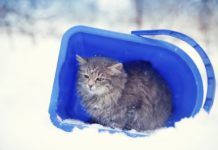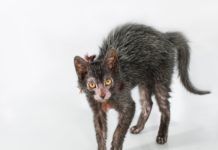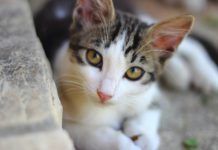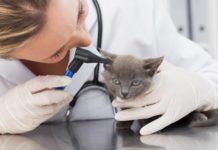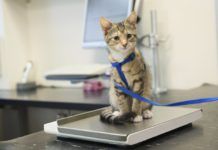Diagnosis: Feline Pancreatitis
The feline pancreas is a slender strip of tissue, shaped somewhat like an upside-down L that is tucked snugly within the right-hand side of a cats abdomen, at a junction between the animals left kidney and her duodenum - the beginning portion of her upper intestinal tract. Despite the organs modest size, the multifaceted role that it plays is huge. Indeed, your cats good health depends on a properly functioning pancreas.
Is It An Emergency?
Unfortunately, cats dont do a good job of telling us when theyre sick, says Tufts emergency and critical care veterinarian Armelle de Laforcade, DVM. Their signs can be subtle. Sometimes, their response to illness is just to be quieter, and that can be easy to miss. To help you know when to make an appointment for your cat at the vets office - and when to jump in the car and get him there as soon as possible - Dr. de Laforcade goes over some common signs, and how seriously to take them.
How to Winterize Your Cat
With the arrival of winter, youll want to take the necessary measures to protect your cat against the health hazards that cold, inclement weather can create - especially if you live in those areas of the U.S. where plummeting temperatures, harsh winds and heavy snowfalls commonly occur. Most vulnerable to various cold-weather disorders, of course, are those cats who spend all or the bulk of their time outdoors.
Research linking FIV to potential anti-HIV drugs; the Lykoi cat
FIV helping HIV researchBecause cats can contract FIV (feline immunodeficiency virus) - which is the feline equivalent of HIV seen in humans - they may be helpful in the continued search for anti-HIV drugs, according to a new study published recently in the journal Cell Structure.
Feline Hemophilia
The eight-month-old kitten was referred to Tufts because he was bleeding excessively after being neutered. This type of reaction was not normal, leaving veterinarians at Cummings School of Veterinary Medicine at Tufts University briefly puzzled - and concerned.
Feline Blood Types Lack Universal Donor
Cats have three major types of blood: A, B and AB. Since cats have naturally occurring antibodies against blood types other than their own, there is no such thing as a universal cat donor, explains Elizabeth Rozanski, DVM, Associate Professor of Emergency and Critical Care in the Department of Clinical Sciences at Cummings.
Ear Infections in Cats
Although most cats will go through life without experiencing significant auditory problems, owners should be aware that various ear conditions can be extremely painful and may, if unrecognized and untreated, compromise a cats hearing. These conditions include, for example, congenital structural defects, physical trauma and obstructive growths within the ear, such as polyps and tumors.
Dear Doctor December 2014
Ask the doctor - Can a cat suffer a concussion?; separating siblings because of a move; acne and plastic
Research that may help human eye diseases
Research for eye diseasesAccording to researchers at the University of Missouri and UC Davis, mutations in the cat genome correlate to two human eye diseases. The project - called 99 Lives Cat Genome Sequencing Initiative - involved the sequencing and studying of the genes of 99 cats.
Abnormal Weight Loss in Cats
Although obesity is a major and persistent feline health problem, with an estimated 40 percent or more of cats living in U.S. homes significantly or grossly overweight, owners should also be aware of the many and frequently severe hazards associated with its opposite - significant weight loss over a brief period of time.
What is Cobalamin Deficiency?
Recently, Lemon - a 14-year- old spayed female domestic shorthaired cat - presented to my cat hospital for weight loss and inconsistent appetite. One day she would eat normally. The next day, she would unenthusiastically pick at her food. I asked her owner if Lemon was also showing increased thirst and urination; but I was told no - that her thirst and urination were normal.
Feline Pain Management
Stub your toe, bump your head or cut your thumb while peeling an apple, and youre apt to give out a yell that will let the world - or at least the other members of your household - know that youre in pain. When it comes to dealing with pain, however, cats simply arent like that.






